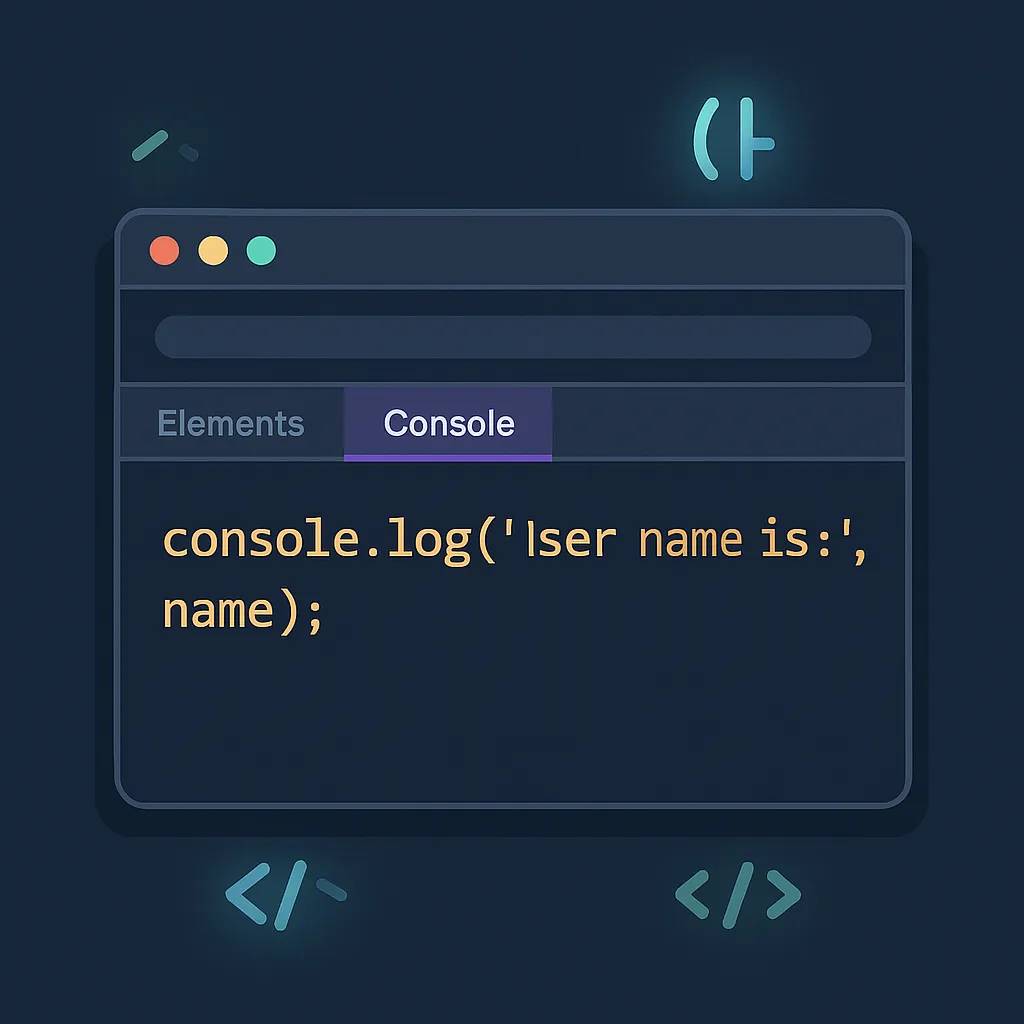Why the Console Is a Developer’s Best Friend
Whether you’re working on a WordPress site, building a JavaScript app, or tweaking frontend behavior, your browser’s Developer Tools (DevTools) console is one of the most powerful tools at your disposal. With the console, you can inspect variables, trace bugs, execute live code, and get immediate feedback—all without refreshing the page or adding temporary UI output.
Opening the Console
To open the console in most browsers, use the shortcut:
- Chrome/Edge:
Ctrl + Shift + JorCmd + Option + J(Mac) - Firefox:
Ctrl + Shift + KorCmd + Option + K
Alternatively, right-click anywhere on the page and choose Inspect, then switch to the Console tab.
Using console.log() to Trace Code
The most common method: console.log(). It allows you to print variables, expressions, or even complex objects to the console:
const name = 'Jon';
console.log('User name is:', name);You can pass multiple arguments and even use template literals:
const role = 'developer';
console.log(`Logged in user: ${name}, Role: ${role}`);Visualizing Data with console.table()
If you’re working with arrays or objects, console.table() displays data in a clean, tabular format:
const users = [
{ name: 'Alice', age: 25 },
{ name: 'Bob', age: 30 },
{ name: 'Charlie', age: 22 }
];
console.table(users);Timing Execution with console.time()
If you want to measure how long a function or loop takes to run, try this:
console.time('Loop Time');
for (let i = 0; i < 1000000; i++) {
// something expensive
}
console.timeEnd('Loop Time');Debugging with debugger
Insert the keyword debugger anywhere in your code to pause execution and open the debugger (if DevTools is open):
function calculateTotal(a, b) {
debugger; // Execution will pause here
return a + b;
}Now you can inspect variables, step through code, and watch how values change in real time.
Conditional Logging
Don’t clutter the console with unnecessary logs—use conditions to narrow down output:
if (user.isAdmin) {
console.log('Admin access granted');
}Filtering Logs by Level
The console supports different log levels that you can filter by:
console.error()– For red error messagesconsole.warn()– Yellow warningsconsole.info()– General infoconsole.debug()– Low-level details
Use them to keep your output organized:
console.error('Something went wrong!');
console.warn('Deprecated method in use.');
console.info('User logged in.');
console.debug('Debug mode active');Live-Editing Code from the Console
Did you know you can directly run JavaScript from the console? This is perfect for testing new code or adjusting variables:
document.querySelector('h1').style.color = 'hotpink';This lets you tweak styles, simulate clicks, or trigger functions on the fly without reloading the page.
Inspecting Elements and Events
Use $0 to reference the currently selected element in the Elements tab. You can also type getEventListeners($0) to view all attached event handlers.
$0.classList.add('highlight');Console Shortcuts & Tips
$_— last evaluated expression$0to$4— last 5 selected DOM elementsclear()— clears the console- Arrow Up/Down — cycle through command history
Wrapping Up
Using the browser console effectively transforms the way you debug, test, and optimize your code. Whether you’re outputting variables, catching errors, or analyzing performance, it’s your real-time window into the running application. The more fluent you get with these tools, the faster you’ll solve bugs and understand your codebase.
Try using console.log() and friends on your next project—you’ll wonder how you ever worked without them.


Leave a Reply